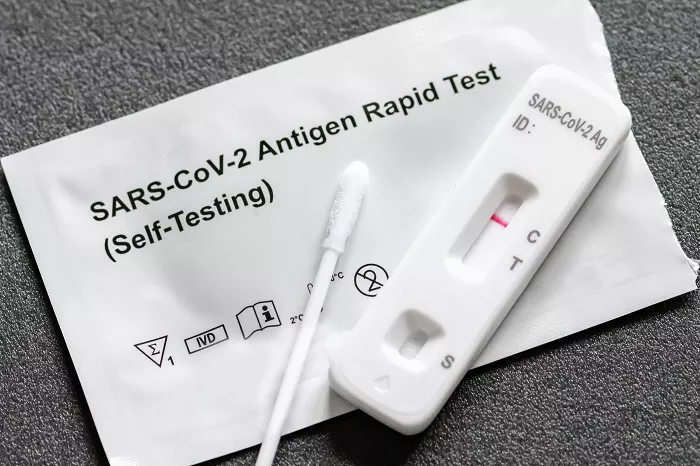Why Are Scars So Stubborn?
Scars are more than just physical marks. They are often emotional reminders of accidents, surgeries, acne, or skin conditions that disrupted life in some way. While the body’s ability to heal is remarkable, the result isn’t always a return to flawless skin. Instead, many are left with raised, discolored, or textured patches that linger for years. This has led people to explore natural remedies that may soften, lighten, or even fade scars. One such remedy is castor oil—a thick, golden oil with a long history in folk medicine and skincare.
Many over-the-counter products promise rapid scar removal, but few deliver lasting results. Laser treatments and chemical peels are effective but expensive and sometimes invasive. As people turn to more natural options, castor oil stands out for its healing and moisturizing properties. Whether it truly works for scars is a question worth exploring in detail. This article will examine how castor oil interacts with the skin, what scientific and anecdotal evidence says about its effectiveness, and how to safely incorporate it into your skincare routine.
What Is Castor Oil Made Of?
Castor oil is derived from the seeds of the Ricinus communis plant, a species native to tropical regions of Africa and Asia. The seeds contain a potent compound called ricinoleic acid, which makes up almost 90% of the oil. This unique fatty acid has been credited with castor oil’s anti-inflammatory, antibacterial, and moisturizing properties. It also contains vitamin E, omega-6 fatty acids, and other nourishing compounds that support skin repair.
The extraction process involves cold pressing the seeds to retain the oil’s purity. This thick, almost sticky oil has been used for centuries for various health issues, including constipation, dry skin, hair regrowth, and joint pain. In skincare, it has gained popularity for its supposed ability to hydrate deeply, promote cell regeneration, and reduce pigmentation. These qualities suggest that castor oil might help in treating both fresh and old scars.
How Does Castor Oil Work on Scars?
Scars form when the skin repairs itself after damage. The process involves inflammation, tissue regeneration, and collagen production. While the body attempts to restore the skin, the new tissue can often appear different in texture or color. Castor oil may support this natural regeneration process in several ways. Its deep penetration allows it to reach beneath the outer layer of skin, providing moisture and promoting elasticity. This is particularly helpful for hypertrophic or keloid scars that appear thick and raised.
Ricinoleic acid, the key active ingredient, has anti-inflammatory properties that may reduce swelling and redness around scars. It also helps increase the flow of lymphatic fluid, aiding detoxification and reducing puffiness in the skin. When massaged into the skin, castor oil can improve circulation, which may further stimulate tissue repair. Over time, this can lead to a smoother skin surface and less visible scarring. However, results vary, and patience is key.
Can Castor Oil Lighten Dark Scars?
Discoloration is one of the most common concerns with scarring. Acne scars, surgical marks, or cuts often leave behind dark patches called post-inflammatory hyperpigmentation. Castor oil contains antioxidants that may help fade these spots gradually. Vitamin E in the oil helps fight free radicals that cause cellular damage, while omega-6 fatty acids support new cell growth. Together, these elements may encourage a more even skin tone.
Additionally, castor oil helps retain moisture in the skin. Well-hydrated skin is healthier and more capable of regenerating effectively. With regular use, some people notice that dark spots and scars begin to blend more seamlessly with the surrounding skin. It’s important to note that castor oil does not bleach the skin—it works by supporting natural cell turnover and reducing inflammation that can make scars appear more prominent.
Is There Scientific Evidence Behind the Claims?
While many people report positive results with castor oil, scientific studies specifically focused on scars are limited. Much of the available research highlights its general skincare benefits. For instance, studies have confirmed that ricinoleic acid has anti-inflammatory and antibacterial effects. These traits are beneficial for preventing infected wounds and reducing inflammation that leads to scar formation. In addition, castor oil has been found to enhance wound healing in animals and in some in vitro studies.
However, more large-scale, human-centered research is needed to fully verify its effects on various scar types. Dermatologists often recommend it as a supportive treatment rather than a primary solution. When combined with massage, silicone gel, or prescription treatments, castor oil may enhance results. Until science catches up with popular use, most of the support for castor oil remains anecdotal—but widespread.
Which Types of Scars May Benefit?
Not all scars are the same, and not all will respond the same way to treatment. Castor oil appears to be most effective on early scars and minor marks. For example, acne scars, stretch marks, and scars from small cuts may show improvement with consistent use. The oil helps keep the area soft and pliable, which prevents it from becoming hard and raised. Over time, this may reduce the appearance of these scars.
Older, more established scars such as surgical scars or keloids may be more resistant. However, regular application of castor oil may help soften the tissue, reduce itching, and improve flexibility. Even if it does not erase the scar, it can improve the texture and make it less noticeable. Combining castor oil with other natural ingredients like aloe vera or rosehip oil may also enhance its effectiveness.
How Should You Use Castor Oil on Scars?
Using castor oil is simple but requires consistency. Begin by cleansing the scar area thoroughly with warm water and a gentle cleanser. Pat the area dry with a clean towel. Take a few drops of castor oil and warm it between your fingers. Massage it gently into the scar using circular motions for 5 to 10 minutes. This not only helps with absorption but also stimulates blood flow to the area. Let it absorb into the skin and leave it on overnight for best results.
For added benefit, you can cover the area with a clean cloth or bandage to lock in moisture. If you’re using it during the day, allow it to absorb fully before putting on clothing. Repeat the process daily for several weeks or months. It’s essential to monitor the skin for any irritation, especially if you have sensitive skin. While castor oil is generally safe, a patch test is always recommended before beginning regular use.
Are There Any Risks or Side Effects?
Despite its natural origin, castor oil is not free from potential side effects. Some people may experience allergic reactions, including redness, itching, or a rash. These symptoms are more likely if the oil is applied in large quantities or to broken skin. People with very sensitive skin should be cautious and test a small area before full application. Always use cold-pressed, hexane-free castor oil for skin use to avoid irritation from chemical residues.
Overuse can also lead to clogged pores, especially for acne-prone individuals. Since castor oil is very thick, it can trap dirt and bacteria if not removed properly. If you notice breakouts, reduce the frequency of application or switch to lighter oils. If you’re already using prescription scar treatments or creams, consult a dermatologist before combining them with castor oil. It’s best to ensure there are no conflicting ingredients.
Comparing Castor Oil to Other Scar Treatments
Compared to pharmaceutical scar treatments, castor oil is gentle and affordable. Products like silicone sheets, retinoids, or corticosteroid creams often provide faster results, especially for deeper scars. However, they can also come with side effects and are not always suitable for long-term use. Castor oil, by contrast, is safe for extended periods and can be used as part of a broader skincare routine.
Other natural oils, like rosehip seed oil, vitamin E oil, and tamanu oil, are also popular for scars. Some people choose to mix them with castor oil to create a custom blend that targets specific skin concerns. Castor oil’s thickness can act as a base, while other oils provide additional nutrients. The key is consistency and patience. Natural remedies often take weeks or months to show visible changes, especially on old scars.
How Long Before You See Results?
Results vary depending on the scar’s age, depth, and your skin type. Some people notice improvement in skin softness and texture within a few weeks. For more noticeable fading or flattening, it may take several months of daily use. The timeline also depends on how well the oil is absorbed and how the body responds to the massage. Keeping expectations realistic is important. Castor oil can support the fading process, but it may not completely erase scars—especially if they are deep or fibrous.
Tracking your progress with photos can help you stay motivated. Sometimes, gradual changes are not noticeable day to day but become clear over time. If no improvement is seen after 8 to 12 weeks, you might consider combining castor oil with professional treatments like microneedling or laser therapy under the guidance of a dermatologist.
Can Castor Oil Be Your Scar Solution?
Castor oil may not be a miracle cure, but it is a valuable tool in the natural skincare world. Its unique combination of hydration, anti-inflammatory action, and deep penetration make it a gentle yet potentially effective option for managing scars. While scientific proof remains limited, the long-standing tradition of using castor oil in healing rituals and personal care suggests it holds real promise.
For those seeking a low-cost, non-invasive, and easy-to-use option for scar care, castor oil is worth trying. It encourages a gentle, consistent skincare routine and helps restore not just the appearance but also the feel of healthier skin. As always, approach any new skincare product with patience and self-awareness. The journey to healing scars is both physical and emotional, and every small step counts.
Related Topics































